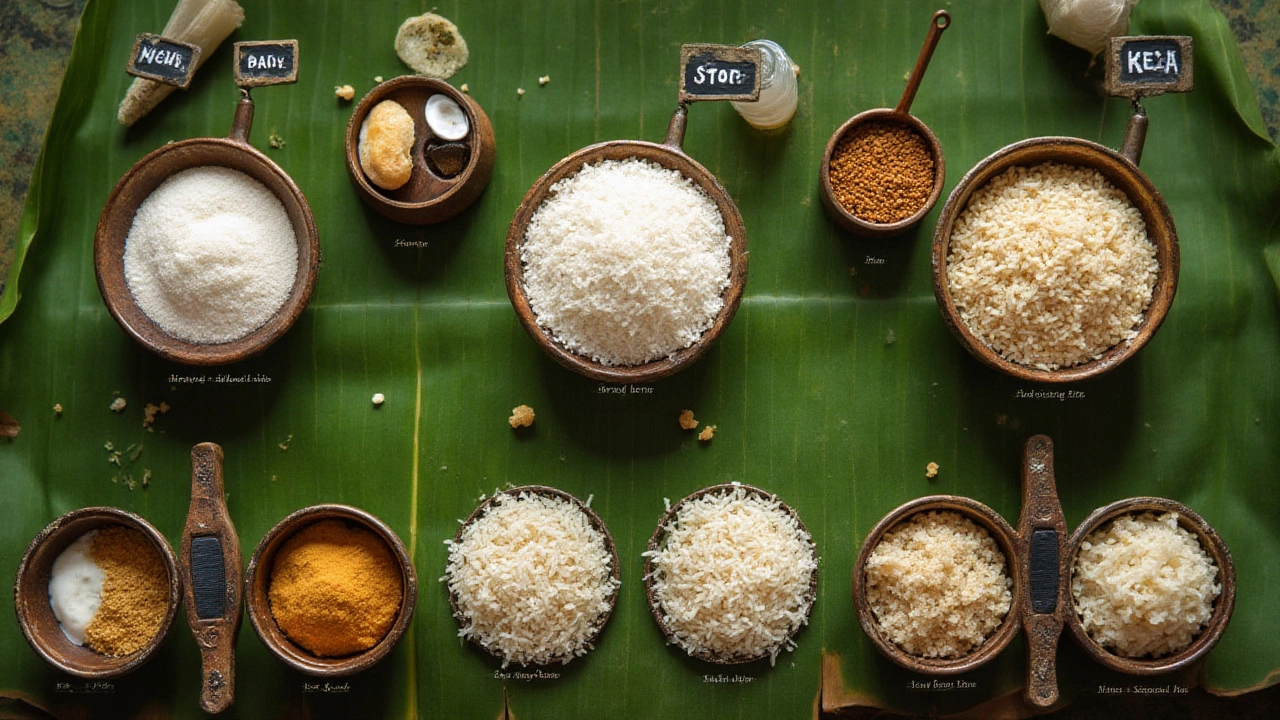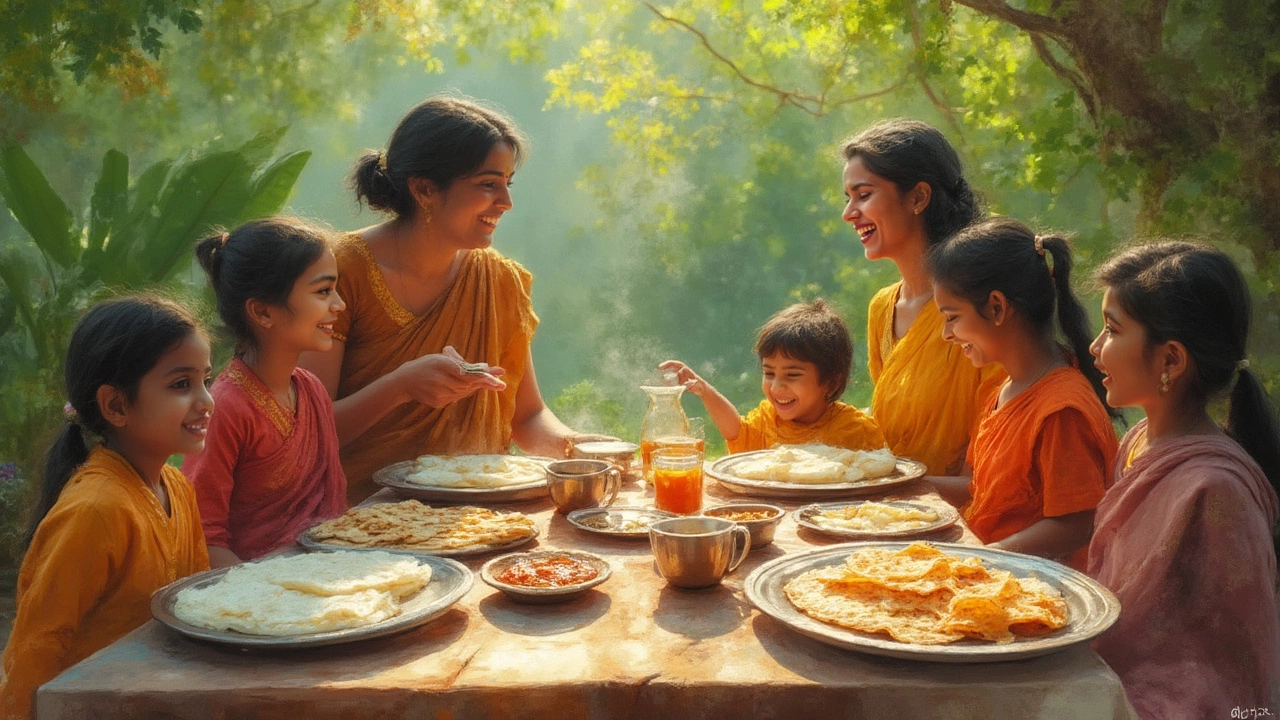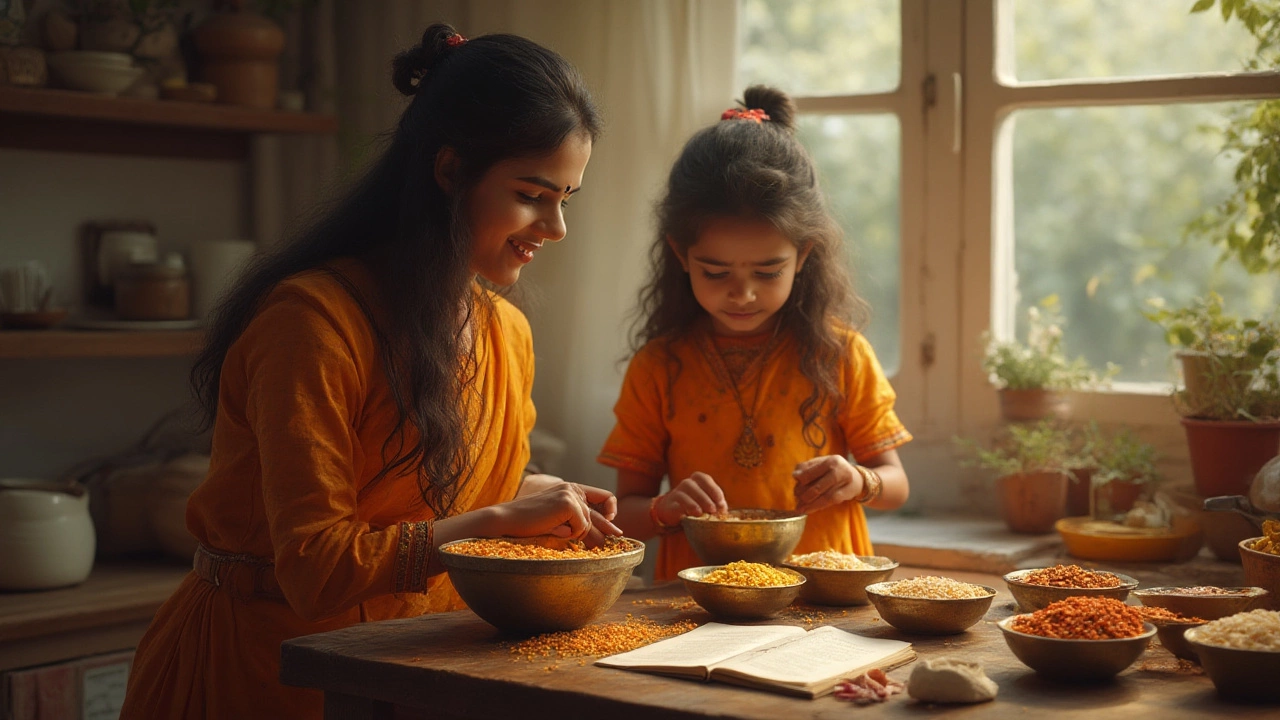Crunchy dosas that crackle in the skillet, pillowy-soft idlis that vanish in your mouth—one thing they’ve got in common is the humble game of proportions. The difference between a fluffy idli that you could use as a pillow and a brittle one that could chip a tooth? The precise urad dal and rice ratio. This isn’t just grandma’s rule or some mysterious southern secret; it’s a science and an art form, rolled into a daily ritual in many homes. Yet, walk into a South Indian kitchen, and you’ll hear heated debates over what’s better—2:1, 3:1, or something entirely wild. Let’s make sense of the numbers, dig into the histories, and get your breakfast just right—whether you like your recipes traditional or with a twist.
Why Ratio Matters: The Magic Blend of Urad Dal and Rice
People rarely think about the simple logic behind their favorite dosas or idlis. At its core, it all boils down to urad dal and rice—a pairing as iconic as peanut butter and jelly, though a thousand times more ancient. The urad dal (black gram split and husked) is entrusted with fermentation—it fluffs, it tenderizes, and its sticky proteins help lock in those precious gassy bubbles. Rice, on the other hand, brings the body, the stretch, the gentle chewiness. What happens if you play loose with these weights and measures? You get a batter that’s impossible to spread, idlis that sulk in the steamer or, worse, dosas that never crisp. If you eye-ball it, you’re gambling with chemistry.
Across India, especially in Tamil Nadu, Andhra Pradesh, and Karnataka, generations have handed down ratios as family lore. Funny enough, modern kitchens with powerful grinders and cold storage mean the perfect ratio isn’t always set in stone. Traditionally, you’d see a 4:1 ratio—four cups parboiled rice to one cup urad dal—for that grand heritage-style breakfast. But what’s behind the numbers? Rice, especially short-grain parboiled or idli ‘sooji’, contains more starch and less protein than urad dal. The dal, loaded with stickiness (think mucilage), helps ferment the whole batter and gives idlis their aerated, spongy bite. Add too much dal, and the batter becomes gummy and sticky, leaving you with dense idlis. Skimp on the dal, and you kill the rise, making flat, lifeless cakes.
Some families swear by small changes: adding a handful of cooked rice, or a spoonful of fenugreek seeds, which is known to help break down and ferment the batter faster. These little tweaks can make a big difference, but even the old hands stick close to their ratios—unless they’re experimenting for that extra little flavor nudge. If you ask around, you’ll learn that the right ratio depends on your end game: dosas, idlis, uttapams, or vada.
The Gold Standard Ratios: Idli, Dosa, Uttapam and More
The moment you start googling "urad dal and rice ratio," you’re swamped with numbers. Should you just flip a coin? Here’s a table that lays out the most common, tried-and-tested ratios you’ll find in Indian kitchens:
| Dish | Rice | Urad Dal | Other Additions |
|---|---|---|---|
| Idli | 4 parts | 1 part | 1 tbsp fenugreek, 1/2 cup cooked rice(optional) |
| Dosa (Crispy) | 3 parts | 1 part | 1 tbsp chana dal (for color), 1 tsp fenugreek |
| Uttapam | 2.5 parts | 1 part | Vegetables, herb toppings |
| Masala Dosa | 3 parts | 1 part | 1-2 tbsp poha, 1 tsp fenugreek |
| Soft Dosa | 4 parts | 1 part | Cooked rice or poha for softness |
| Adai (Mixed Dal Dosa) | 1 part | 1 part mixed dals | Red chillies, cumin, no fermentation |
If you’re thinking metric, that’s roughly 100g urad dal to every 300-400g rice for most recipes. Put away those spoons—use a kitchen scale for better results. What’s most fascinating: idli rice is not the same as basmati or jasmine. It’s a fat, short-grained parboiled rice that’s built for fermentation. Some folks add a little bit of regular rice flour or leftover cooked rice to boost softness. Want an easy shortcut? Throw in 2 tablespoons of soaked poha on days you want idlis as soft as bakery cotton, especially in winter when fermenting gets tricky.
Curious why dosa batter needs less rice? It’s all about texture. For idlis, we’re aiming for cloud-like fluff—crispiness isn’t the goal. The extra rice in dosa batter makes it more spreadable and less likely to stick in the pan, while the higher dal content in idli batter allows more steam bubbles to stay trapped inside. Uttapam’s a bit in-between. Since it’s thicker and more like a pancake, splitting the difference between rice and dal creates the perfect texture—neither too chewy nor too soft.

Tricks for Getting the Ratio Just Right (and What Happens If You Don’t)
Funny how a small slip can throw off your whole breakfast. Got too much rice? Your idlis will be flat and a bit dry, while dosas might tear or stick to the pan. Overdo the urad dal and you’ll get a sticky, over-fermented mess that refuses to behave. It sounds picky, but even a difference of 10-20 grams can throw things out of whack, especially for idlis. Water content also matters—while soaking, the rice and dal will soak up different amounts. Use cold water in warm weather to slow fermentation, and use filtered water for better batter. If you live where it’s chilly, hide your batter batch near a light bulb, inside your oven (turned off), or use a yogurt maker to keep the temperature cozy enough for those friendly microbes to do their thing.
- Tip: For softer idlis in winter, double the urad dal for a 2:1 ratio and add ¼ cup of soaked poha or cooked rice. This will help fermentation and give better soft texture.
- Tip: If batter doesn’t rise, try a pinch of baking soda before steaming—though the flavor will be less traditional.
- Tip: Never overload the grinder. Grinding in small batches helps get the fluffiest dal. Make sure the dal is ground first to a smooth, light paste before adding the soaked rice.
- Tip: If using a mixie/blender instead of a stone grinder, add more water and grind in 2-minute bursts to avoid overheating—and always cool the batter before covering for fermentation.
- Tip: Fresh batter rises better. Don’t keep ground batter in the fridge for too long—24-48 hours is the safe window for best results.
For the perfectionists out there: if your idlis or dosas never come out the same way twice, jot down your rice and dal measurements every time you use a new brand or batch of beans and rice. Some urad dal varieties (especially the whole, unsplit ones) can soak up more water, and their stickiness and behavior might change the game. Some rice batches come with higher starch, others cook softer. The only way to be sure is to trust your eyes and your taste, but always begin with the classic 4:1 for idlis, 3:1 for dosas, and adjust as you go.
The Science of Fermentation: Why Soaking and Grinding Matter
You can’t talk urad dal and rice ratio without getting a bit nerdy about fermentation. Fermentation isn’t a fad or a chef’s experiment—it’s what gives your idlis their whisper-light sponge and makes dosas brown and bubble instead of falling flat. So, why not just toss everything in a blender in the morning and cook it up? The magic sits in time, temperature, and technique. Urad dal houses wild yeast and lactic acid bacteria in its skin and crevices. When you soak and grind it, you’re kickstarting a party for all those helpful microbes. They start breaking down starches, unlocking nutrients, and pumping out natural CO2, which makes your batter balloon and your kitchen smell wonderfully tangy.
Grind the dal too roughly, and its proteins won’t trap air. Rush the soaking or skip the salt, and fermentation limps along. Modern electric grinders cut the hard work in half—they whip in more air and leave the batter lighter than those old hand-turned stone mortars. Still, water temperature and overnight resting times haven’t changed in centuries: 6-8 hours of soaking, 30-45 minutes of grinding, another 8-12 hours for fermentation (sometimes longer in cold weather). If you keep a prep calendar, plan for a two-day cycle: soak at night, grind in the morning, ferment through the day, cook in the evening.
Here’s a geeky nugget for your next breakfast party: a 2021 study by the Indian Institute of Food Processing Technology found that traditional stone grinding (vs. electric mixie) results in a 15-20% higher yield of batter volume, with better porosity. That means stone-ground idlis might rise higher and get softer, but honestly, nobody’s going to judge you if you use your regular kitchen blender—just remember to adjust your water and let the grinder cool down between batches.
Fermentation’s real trick is the right pH. Once the batter hits a pH of about 4.5 to 5.5, it’s primed for steaming. A lukewarm Indian summer can drop that pH in hours, but a snowy day in Delhi can freeze that progress. To speed things up in winter, many home cooks add a dash of sugar or cook their rice with fenugreek seeds—the extra carbs and mucilage help the microbes get to work faster.

Regional Variations and Creative Twists: More Than Just Ratio
If you explore the subcontinent, you’ll find every family adds a signature twist to the urad dal and rice ratio, influenced by weather, water, grain quality, and even family taste. Down south in Kanchipuram, you’ll find temple idlis with half a dozen spices and peppercorns folded in, while in Telugu homes, a spoonful of ghee is sometimes mixed into the batter after fermenting to give a subtle aroma. In Kerala, matta rice is paired with urad dal for a grainier idli, while Karnataka is famous for the Dharwad pedha and its local ‘mallige’ idli—named after jasmine—made with extra urad dal and flattened rice (poha) for supreme softness.
Some coastal regions add coconut or a bit of jaggery, creating dosas and idlis with a sweet undertone. In Chettinad, chefs grind a handful of cumin and black pepper into the batter for an earthy, fragrant change from the plain stuff. Modern city kitchens keep things interesting too, experimenting with brown rice for richness, or even adding quinoa or millet to boost the health quotient—though you’ll need to tweak the water and grinding times as these grains behave differently in batters.
Craving gluten-free? The classic batter already is, but some chefs go the extra mile with red rice, foxtail millet, or ragi, matching them to urad dal on a 3:1 or 2:1 basis. Not all substitutions behave the same: millet absorbs more water and ferments faster, while brown rice gives a nutty taste but can make idlis a bit firmer. Always keep a small notebook handy when testing new combos so you can repeat the hits and avoid the misses!
